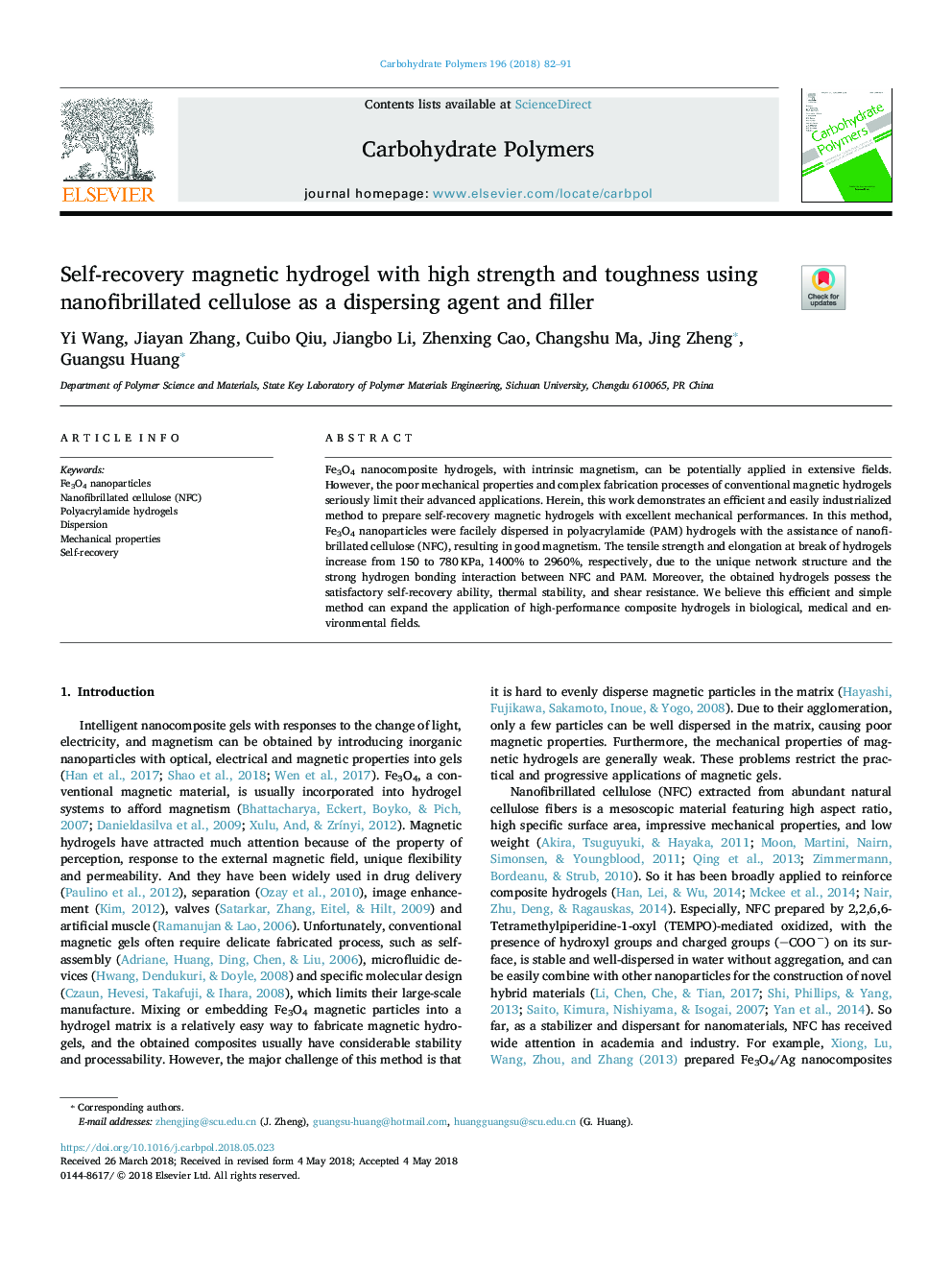| Article ID | Journal | Published Year | Pages | File Type |
|---|---|---|---|---|
| 7781659 | Carbohydrate Polymers | 2018 | 10 Pages |
Abstract
Fe3O4 nanocomposite hydrogels, with intrinsic magnetism, can be potentially applied in extensive fields. However, the poor mechanical properties and complex fabrication processes of conventional magnetic hydrogels seriously limit their advanced applications. Herein, this work demonstrates an efficient and easily industrialized method to prepare self-recovery magnetic hydrogels with excellent mechanical performances. In this method, Fe3O4 nanoparticles were facilely dispersed in polyacrylamide (PAM) hydrogels with the assistance of nanofibrillated cellulose (NFC), resulting in good magnetism. The tensile strength and elongation at break of hydrogels increase from 150 to 780â¯KPa, 1400% to 2960%, respectively, due to the unique network structure and the strong hydrogen bonding interaction between NFC and PAM. Moreover, the obtained hydrogels possess the satisfactory self-recovery ability, thermal stability, and shear resistance. We believe this efficient and simple method can expand the application of high-performance composite hydrogels in biological, medical and environmental fields.
Keywords
Related Topics
Physical Sciences and Engineering
Chemistry
Organic Chemistry
Authors
Yi Wang, Jiayan Zhang, Cuibo Qiu, Jiangbo Li, Zhenxing Cao, Changshu Ma, Jing Zheng, Guangsu Huang,
